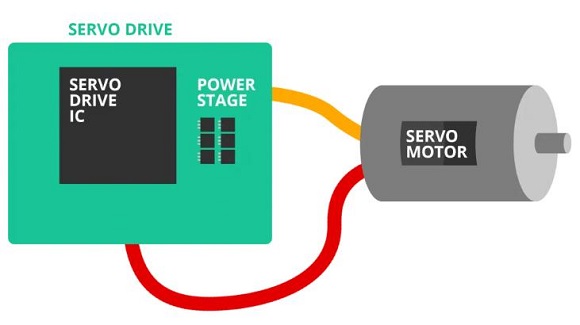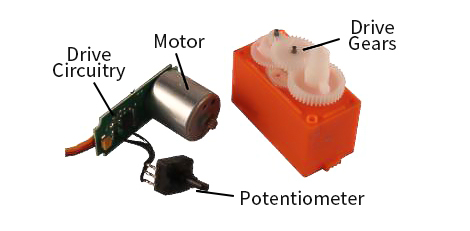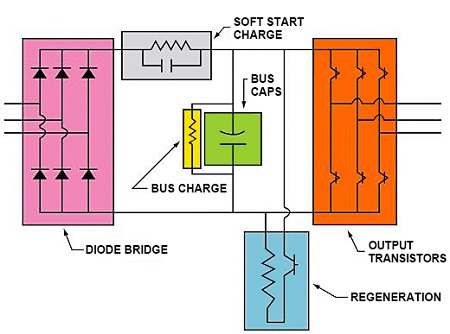Home » Servo Drive » How to Install a Servo Drive?
How to Install a Servo Drive?
Installing a servo drive involves several steps, and the specific process may vary depending on the manufacturer and model of the servo drive you're working with. However, I can provide you with a general guide on how to install a servo drive. Keep in mind that this is a basic overview, and you should always refer to the manufacturer's documentation for detailed and accurate instructions. Also, ensure that you follow safety guidelines and, if necessary, consult with a qualified technician.
General Steps for Installation
 Safety Precaution
Safety Precaution
General Steps for Installation
- Read the Documentation. Before you begin, carefully read the user manual and installation guide provided by the servo drive manufacturer. This documentation will contain specific instructions and safety guidelines that you need to follow.
- Power Off. Make sure the power to the system is turned off before attempting any installation. This ensures your safety and prevents damage to the equipment.
- Mounting. Mount the servo drive in a location that provides adequate ventilation and is within the specified temperature range. Secure the drive using appropriate mounting hardware.
- Connect Power Supply. Connect the power supply to the servo drive according to the specifications in the user manual. Make sure to observe correct polarity and voltage levels.
- Motor Connection. Connect the servo motor to the servo drive following the instructions in the manual. Ensure that the motor cables are properly connected, and observe any specified wiring configurations.
- Feedback Device Connection. If your servo system uses a feedback device (such as an encoder), connect it to the servo drive as per the manufacturer's guidelines.
- Control Signal Connections. Connect the control signals, such as command inputs and feedback signals, according to the provided instructions. This may involve connecting cables to the drive's input and output terminals.
- Configuration. Many servo drives require configuration before operation. This may involve setting parameters using a configuration tool provided by the manufacturer. Consult the manual for details on configuring the drive for your specific application.
- Testing. After completing the installation and configuration, perform initial tests to ensure that the servo drive is operating as expected. Check for any error codes or abnormal behavior.
- Fine-Tuning. If necessary, fine-tune the servo drive parameters to optimize performance for your specific application.
- Documentation. Keep detailed records of the installation, configuration settings, and any changes made to the default parameters. This information will be valuable for troubleshooting and future reference.

- Grounding. Ensure proper grounding of the servo drive and associated equipment to prevent electrical hazards.
- Protective Gear. Use appropriate personal protective equipment (PPE), such as safety glasses and gloves, when handling servo drives.
- Environmental Considerations. Install the servo drive in a suitable environment, considering factors such as temperature, humidity, and ventilation. Follow the manufacturer's guidelines for environmental conditions.
- Cable Management. Secure and route cables properly to prevent tripping hazards and to avoid damage to cables.
- Regular Inspections. Periodically inspect the servo drive and associated components for signs of wear, damage, or loose connections. Address any issues promptly.
- Emergency Stop Procedures. Ensure that emergency stop procedures are clearly defined and easily accessible. Test emergency stop functionality regularly.
- Training. Provide comprehensive training to operators and maintenance personnel regarding the proper use, maintenance, and troubleshooting of servo drives.
- Overload Protection. Implement overload protection mechanisms to prevent damage to the servo drive and connected machinery in case of excessive loads.Software and firmware updates keep the servo drive's software and firmware up to date with the latest releases provided by the manufacturer.
- Isolation. Isolate the servo drive from other electrical systems to prevent interference and ensure stable operation.
- Hazardous Areas. If the application involves hazardous materials or environments, follow specific safety regulations and guidelines for those areas.
Post a Comment:
You may also like:

Category
Featured Articles
What are the Soft Start Techniques for ...
 Servos (as commonly used in radio-controlled vehicles and small-scale robotics)are DC actuators that use a potentiometer to ...
Servos (as commonly used in radio-controlled vehicles and small-scale robotics)are DC actuators that use a potentiometer to ...
 Servos (as commonly used in radio-controlled vehicles and small-scale robotics)are DC actuators that use a potentiometer to ...
Servos (as commonly used in radio-controlled vehicles and small-scale robotics)are DC actuators that use a potentiometer to ...Servo Drive System vs. Variable ...
 A servo drive system, as opposed to a variable frequency drive (VFD) or AC motor drive , has the ability to position with ...
A servo drive system, as opposed to a variable frequency drive (VFD) or AC motor drive , has the ability to position with ...
 A servo drive system, as opposed to a variable frequency drive (VFD) or AC motor drive , has the ability to position with ...
A servo drive system, as opposed to a variable frequency drive (VFD) or AC motor drive , has the ability to position with ...What are the Basics of Servo Drive?
 Servo motors come in so many types and flavors that it is difficult to define them in a way that is accurate and universally ...
Servo motors come in so many types and flavors that it is difficult to define them in a way that is accurate and universally ...
 Servo motors come in so many types and flavors that it is difficult to define them in a way that is accurate and universally ...
Servo motors come in so many types and flavors that it is difficult to define them in a way that is accurate and universally ...How to Install a Servo Drive?
 Installing a servo drive involves several steps, and the specific process may vary depending on the manufacturer and model of the ...
Installing a servo drive involves several steps, and the specific process may vary depending on the manufacturer and model of the ...
 Installing a servo drive involves several steps, and the specific process may vary depending on the manufacturer and model of the ...
Installing a servo drive involves several steps, and the specific process may vary depending on the manufacturer and model of the ...